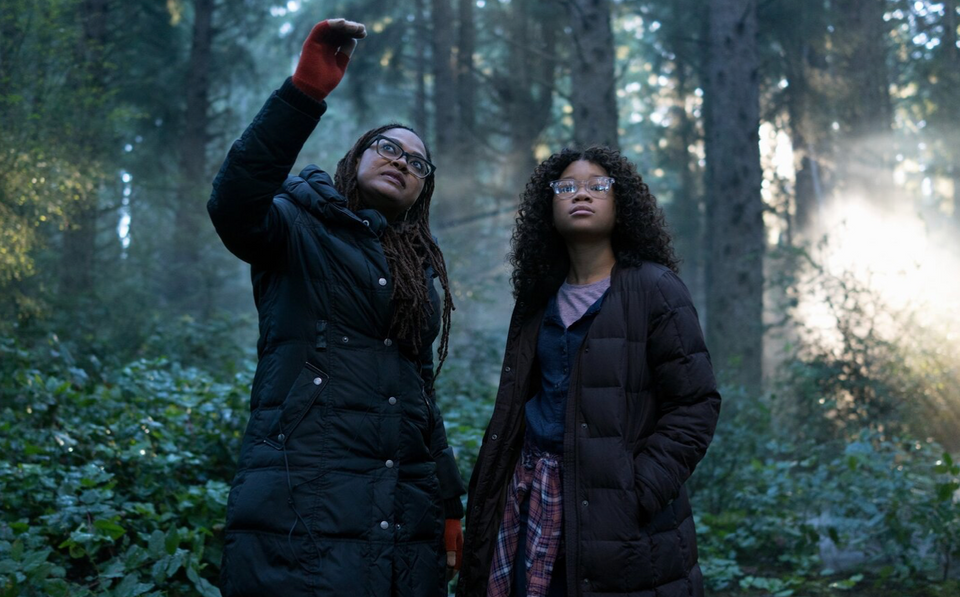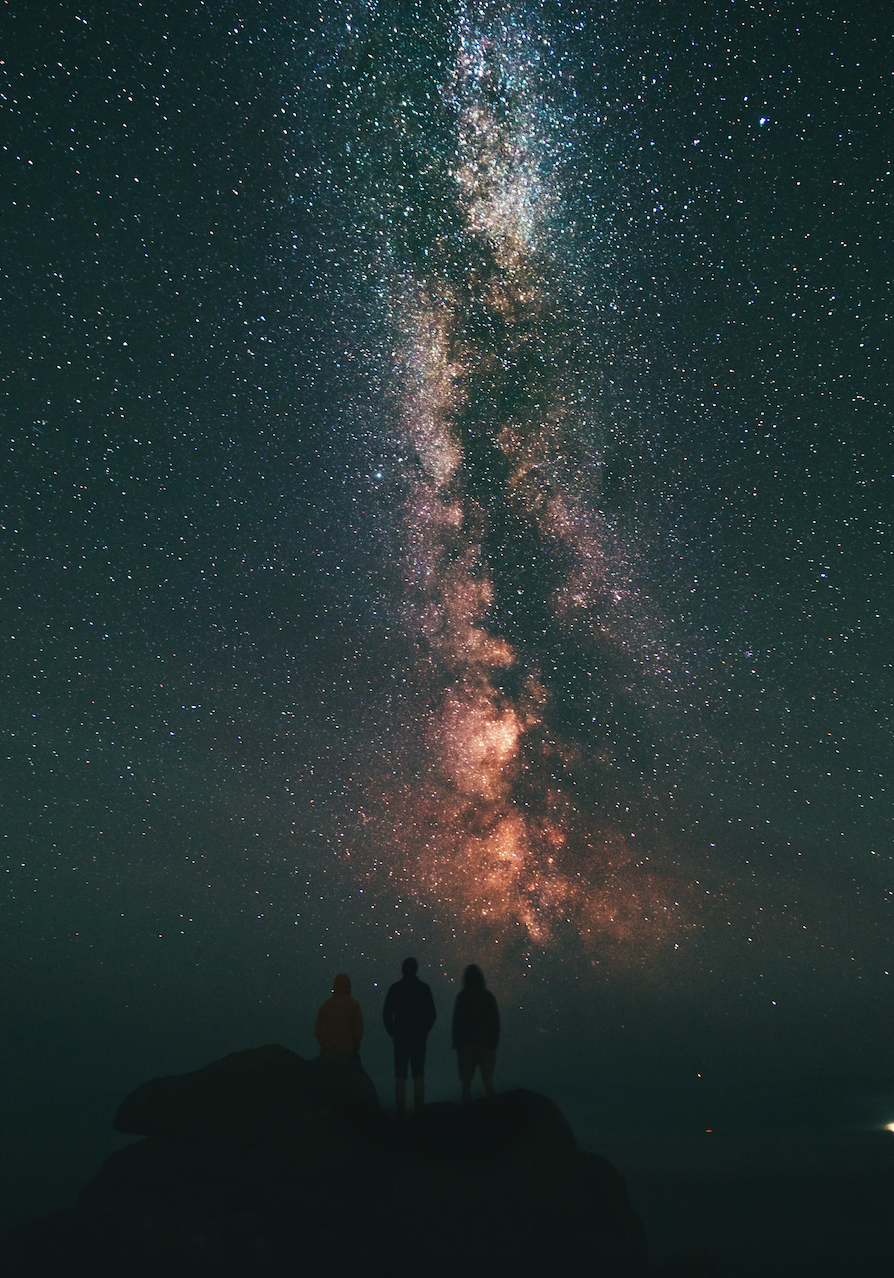I am pretty certain that every review of Malick’s To the Wonder will at some point refer to the scene in which the church janitor describes the presence of God as solar heat in the panes of a stained glass window. For some, the moment will appear a bit too on the nose, evidence of Malick’s regression to a pop-spiritual or formal mean. For others, the moment will be welcomed as a shorthand for his increasingly obvious sacramentality; arriving like a cinematic beatitude in the midst of the bit-part priest’s voice-over reflections on deus absconditus. Either way, I can imagine reference to this scene becoming endemic to its popular and critical reception.
The programmatic scene in To the Wonder actually appears near the beginning as Neil and Marina make their way across the tidal pool to Mont St. Michel (often referred to as “the wonder of the western world”). Before the bridge to the steep rise of stone walls and spires across the water, they pass a small checkpoint where two guards keep visitors from crossing the causeway at high tide.
Mircea Eliade spoke of “thresholds” as spatial markers that signify passage from a profane space to a sacred space. We live our lives in the former lost amidst schedules and domestic routines — groping for fixed points among the anxieties. In the latter exists the ideals, the great big ideas, the things that locate us in a sense of history and purpose. This sense of threshold and frontier is precisely what I think Malick has in mind with this brief clip of two border guards at the tidal crossing.
But these kinds of thresholds are not as static as this arrangement seems at first glimpse. Traffic is permitted either direction. As Eliade says, “For religious man, space is not homogenous; he experiences interruptions in it, breaks in it…” And in this case, Neil and Marina descend back down into the film and its transition to suburban Oklahoma. What we find on this side of the threshold is small town America, brimming with chatty neighbors, main streets and kaleidoscopic fairgrounds. “A land so calm. Honest. Rich,” Marina says. There is also their large, empty house next to a hulking transmission tower. There are stony piles of construction waste blooming in the backyard. There are the flat expanses of lawn being parceled into patches by wooden fences. Hotel rooms by the hour.
The introduction of Father Quintana takes us to the other side of town, where clapboard houses sag in the heat and sidewalks buckle at the edges of unkempt yards. Here we encounter less ornate shots of young mothers, addicts and struggling families. Somewhere in here, we begin to perceive Mont St. Michel as a numinous “Wonder” in comparison, a space untouched by the rubble and sprawl, in contrast to the profane:
“…fragments of a shattered universe, an amorphous mass consisting of an infinite number of more or less neutral places in which man moves, governed and driven by the obligations of an existence incorporated into an industrial society.” (Eliade again…)
This brings us back to the stained glass scene, which is either a generic or enlightening image of the “fragments of [Malick’s] shattered universe.” To the Wonder is Malick’s most formally affected film, the rapid pace of cuts and profusion of angles cobbled together with the random coherency of a cathedral window. The frequent movement of the camera vertically through the thirds of a wider frame pushes the economy of these images even further. With five editors and scenes from several other well-known actors on the cutting room floor, the “amporphous mass” of To the Wonder emerges as Malick’s closest extended brush with pure cinema.
…
Which is interesting, given that this is also the most pedestrian of Malick’s storylines. Neil meets Marina in Paris and falls in love with her, an enchantment affirmed in a scattered aria from images from a trip to Mont St. Michel. Neil is a nice, solid guy. An environmental engineer. He impulsively invites Marina and her daughter to live with him in the US, and at first, they are enchanted by small town Oklahoma. The local Walmart, for example, is impossibly clean and orderly.
But things begin to fall apart. Neil is investigating a possible toxic contamination of the local water table, and his interaction with people in the affected areas is growing strained. Marina and her daughter grow restless. “Something is missing…,” her daughter says. They return to Paris, Neil quietly packing their suitcases in the trunk of the car. Marina will eventually return without her daughter to try again, but in this interlude Neil encounters an old childhood friend, Jane. She is lovely, luminescent and more importantly, rooted deeply in the Oklahoma soil. In a particularly glorious scene (and what my be my favorite Lubezki moment), Neil and Jane stand in the middle of a buffalo herd, perhaps the closest the film gets to a sense of unity: person, nature, each other.
This reverie is broken when Marina returns to wed Neil in a civil ceremony, as she is still married to her daughter’s father according to the Church. Behind them in the courtroom, handcuffed convicts signature their plea bargains and sentences. Circling this set of doomed love stories is the local priest, Father Quintana. He is losing his spiritual grip and wanders through his fatherly routines with questions about the presence and absence of God eating away at his sense of purpose.
So we have little more than a lengthy episode of Friends with notes of Erin Brockovich. But the interleaving of these stories generates a number of connections orbiting the initial wonder of the Mont St. Michel sequence. Neil finds himself dipping test agents into pools, rivers and soil — the toxicity there an industrial profanity measured against the lush sand and creeping purity of the water surrounding the island monastery. The dissolution occurring in the voice-over of Father Quintana is an echo of the agony of faithfulness that plagues the cycles of Neil, Marina and Jane. If the “Wonder” rests at the heart of the film as an image of the locating sense of the divine, these are stories about the restlessness that pervades our experiences of each other, manifest even in our domestic spaces as they crumble in disrepair or spool out from Main Street in search of the manufactured permanence of suburban tracts.
Lest we think that Malick is singling out suburbia as a place that strips us of historical or relational identity, the film is suffuse with imagery of Parisian streets and the local parish that ring similarly hollow.
…
I was not a big fan of The Tree of Life. I have always thought that Malick works best as historian, whether through the Dylan-esque chronicle of a late 50s crime spree, Depression-era naturalism, WW II battlefields, or the sweeping movement of Pocahontas from The New World. His films bank on transcendence as something encountered in history and its events; the materiality of our experience. As his muse Heidegger said, “To dwell is to garden.” Malick’s sacramental gardening has always taken the shape of creative historiography.
To be fair, even The Tree of Life has a slight measure of this sense of location — memoir folded into visual reflections on the cosmic context of remembering. But the great scandal of To the Wonder is its utter sense of the present. It takes place in a generic version of now, rather than in a mythic version of the past. But then there is also Ben Affleck lumbering across most of his frames doing that thing with his jaw to indicate terse, conflicted male. Olga Kurylenko bounds through rapid changes of camera position and exquisitely framed patches of light and shadow similar to the dance of Q’orianka Kilcher through the dappled forests of The New World. But here the rustle of grass and reed are traded for the track of sunlight across freshly laid carpet and the swish of blinds and bedsheets. Rachel McAdams in Carhartts is ripe for a Zizekian double-take.
This sense of the present also appears in the voice-overs of this cast of characters. In a recent interview, editor Billy Weber talks about how Malick happened upon the voice-over in Badlands. They were enamored of the voice-over in Truffaut’s Wild Child, and developed this backgrounded script as a means of “Not necessarily telling the story, but telling the story through the language of a romance magazine.” It then evolved through experimentation into a way to frame Days of Heaven scenes in with narrative.
Through successive films, the Malick voice-over has developed alongside his movement toward abstraction as a sort of philosophical enchantment. Though striking some as insipid and distracting, aphorisms like “Love makes us one” burble up through edits like Platonic forms of basic human experiences and responses. They are elementary and naïve because that is how we encounter existence. By the time we get to To the Wonder, the voice-over is almost completely hieratic. It has passed through the naïve, distilled through learned reflection and lands again in what Ricoeur described as a “second naivete.”
Not only is To the Wonder steeped in an uncharacteristic sense of now, but it is also marked by Malick’s progression toward his current mode of cinema. I had the uncanny sense while watching the film that Malick has caught up with history itself, his past forms of sacred curiosity deployed in our very midst. It is disconcerting to have his cinema erupting in our contemporary tense of the everyday, as if he is pushing his sense of history as myth into the prophetic mechanics of the present.
…
During the interlude with Jane, she talks about the loss of her first child. We learn in her voice-over: “My father, he said to read Romans. ‘All things work together for good.’ ” And then the punch line, “He believed that.”
This is a curious biblical reference for the context. Romans is often read through a Reformation lens as a formula for salvation, but it is better read as a theodicy that includes this frequently sentimentalized idea about “all things working together for good…” This ancient letter to the Roman church is more a demonstration of God’s righteousness, his right-ness, a justification of the seemingly moving target of his favor.
Much is said about Malick as a sacramental mystic. And some of this is correct, but only some. Malick is a storyteller, not just a formalist erecting visual information dumps. As in To the Wonder, most of his stories are a sort of theodicy. Father Quintana’s internal struggle foregrounds this theological quandary. But so does Neil’s blank apathy and Marina’s hapless indecision. Theodicy embraces Eliade’s “interruptions” and “breaks” as plot devices. As a theodicy of the present, To the Wonder is a broken formal vessel through which glimmers the spatial and historic presence of God’s rightness despite the revelatory inadequacies of our inert storylines. It is a presence worth navigating. Underscoring this theodicy is the final shot of the Mont St. Michel “wonder” itself. It erupts from the Normandy coast like a sacred antenna, a fixed pole around which Neil, Marina, and Father Quintana pivot; radio waves of questions bouncing off the canopy of a responsive cosmos.
With all the Malick-fatigue out there a lot of reviews note a quality of formal redundancy throughout To the Wonder. But through the lenses of theodicy and threshold it belongs to a tradition that bears repeating when done well.



